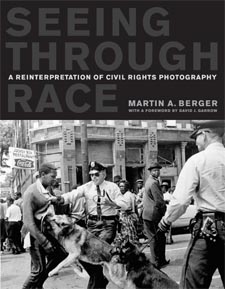Campus News
Second annual Arts Dean’s research lecture spotlights media and race
If you were around in the 1960’s, you’re probably familiar with the iconic photos of the Civil Rights movement that made the daily news—images of African Americans being sprayed by firehoses, attacked by dogs, and beaten by police with batons…


If you were around in the 1960’s, you’re probably familiar with the iconic photos of the Civil Rights movement that made the daily news—images of African Americans being sprayed by firehoses, attacked by dogs, and beaten by police with batons.
But odds are, you never saw images like those of the mutilated body of Emmett Till, a 14-year-old African American who was tortured and killed in the summer of 1955.
While images of Till’s corpse were widely distributed in the black press, not one white newspaper, magazine, or TV station at the time was willing to publish them.
On March 15, Martin Berger will speak about the long-term significance of white media’s reluctance to circulate photos of Till’s corpse, and what was lost in withholding these kinds of gruesome images from white Americans.
Berger is professor and chair of the History of Art and Visual Culture Department at UCSC. He will deliver the second annual Arts Dean’s faculty research lecture at 5 p.m. in the Digital Arts Research Building.
Berger points out that white media outlets consistently illustrated the civil rights movement with images that were “safe,” publishing photos of blacks as passive, peaceful, non-violent, and non-confrontational victims.
And he concedes that these images were effective in changing attitudes of liberal whites toward blacks and civil rights, paving the way for reform through legislation.
But Berger contends that the current racial problems we have today are a legacy of issues that were never resolved in the 50’s and ‘60s.
“Yes, the photos helped the civil rights cause, the images did good work and helped change laws,” Berger explains. “But we still have a lot of whites who are very uncomfortable with race.”
“I argue that blacks were invariably active in protest—that dynamic black action helped change society. And blacks had a hunger to see all photos be published, since there was a longstanding history of whites not showing what they did to a black body.”
“But in 1955, almost all of white America didn’t want to see the difficult images.”
Berger notes that this same dynamic still plays out today. He cites for example, the second debate between John McCain and Barack Obama in 2008.
“It’s a close race, so the pundits said that McCain needs to come out swinging to close the gap,” says Berger. “But nobody argues that since it’s so close, that Obama should come out fighting. An angry black man in a debate against McCain would not lead to the White House.”
“Obama is well-known for his coolness, but it was really his only option,” adds Berger. “An angry black man reinforces the black stereotype.”
Berger’s talk is drawn from his most recent book Seeing Through Race: A Reinterpretation of Civil Rights Photography, published last year by UC Press. He is also the author of Sight Unseen: Whiteness in American Visual Culture, which won the John B. Cawleti Prize from the American Culture Association in 2006.
“The difficult photos need to be published because they bring out the blind spots in our culture,” Berger observes.
“Which is the same reason why neither Bush or Obama are anxious to show explicit photos from Iraq or Afghanistan. Because it’s very easy to ignore wars and pretend they don’t exist. Those wars have gone on longer than all of WWII, but now many people have no connection to them.”
________________________________________________________________________________________________________
The second annual Arts Dean’s Faculty Research Presentation takes place on Thursday, March 15, at 5 p.m. in the Digital Arts Research building on the UC Santa Cruz campus. A reception will immediately follow. Admission is free and open to the public. For more information, call (831) 459-2787.